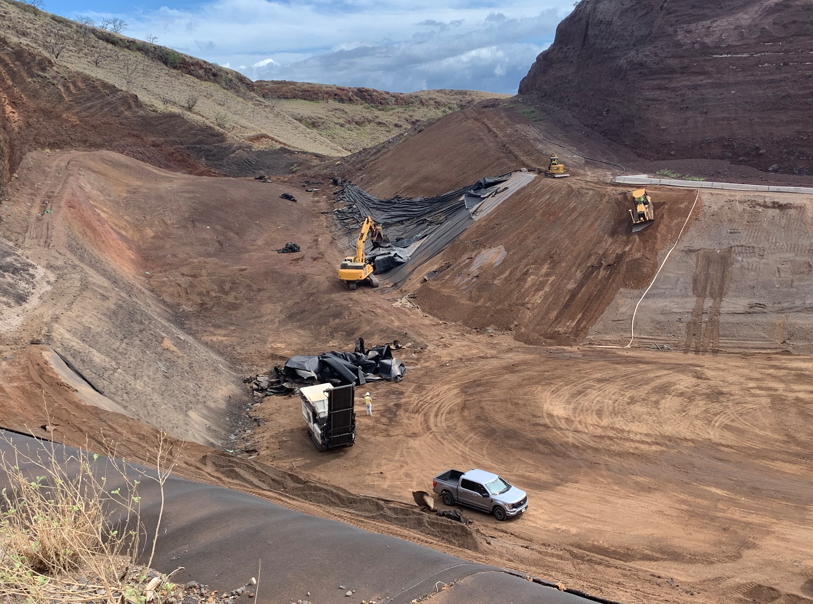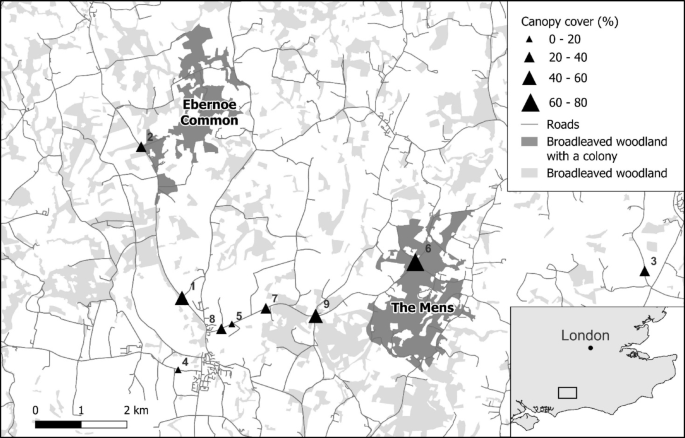Report on the Interplay of Chemical Pollution and Biological Invasions in the Context of Sustainable Development Goals
Introduction
A recent review from the University of Wyoming highlights the critical intersection of chemical pollution and invasive species, a dual threat to global ecosystems. The research, led by Assistant Professor Isaac Ligocki and published in Proceedings of The Royal Society B, examines how pollutants influence the process of biological invasion. This analysis is paramount to achieving several Sustainable Development Goals (SDGs), particularly those focused on preserving biodiversity and environmental health.
Key Findings of the Research
The study provides a comprehensive overview of the current understanding of pollutant-invasion interactions, with a focus on animal species. Key points include:
- Research Gap: While the interaction between herbicides and invasive plants is well-documented, there is a significant lack of research concerning these dynamics in animal species.
- Broad Definition of Pollution: The review considers a wide range of pollutants, including synthetic compounds like pesticides and microplastics, as well as naturally occurring substances mobilized by human activity, such as heavy metals and road salts. These pollutants directly undermine progress on SDGs related to clean water and terrestrial ecosystems.
- Impact on Animal Traits: Chemical pollutants can alter inherent traits within a species, such as behavior and resilience. These changes can subsequently increase or decrease a species’ potential to become invasive.
- Mechanisms of Interaction: The study outlines potential scenarios where pollution could affect invasion success. For example, pollutants might reduce animal mobility, inadvertently increasing the likelihood of transportation to new habitats. Conversely, pollutants could impair reproductive functions, thereby inhibiting the establishment of an invasive population.
Implications for Sustainable Development Goal 15: Life on Land
The research directly addresses the targets of SDG 15, which aims to protect, restore, and promote the sustainable use of terrestrial ecosystems and halt biodiversity loss.
- Threat to Biodiversity: The combined pressure of chemical pollution and invasive species is a major driver of biodiversity loss. The study underscores the need for integrated management strategies that address both threats simultaneously to protect vulnerable ecosystems.
- Invasive Species Management: SDG Target 15.8 calls for measures to prevent the introduction and reduce the impact of invasive alien species. Understanding how pollution facilitates or hinders invasions is crucial for developing more effective prevention and control protocols.
- Ecosystem Restoration: For conservation and restoration plans to be successful, they must account for the synergistic effects of environmental stressors. This research provides a framework for considering chemical contaminants when restoring habitats impacted by invasive species.
Implications for Sustainable Development Goal 14: Life Below Water
The findings are equally relevant to SDG 14, which focuses on the conservation and sustainable use of oceans, seas, and marine resources. The study specifically references impacts on fish, amphibians, and mussels.
- Aquatic Pollution: Pollutants such as fertilizer runoff, pharmaceutical waste, and microplastics severely degrade aquatic habitats, a central concern of SDG 14.
- Marine and Freshwater Invasions: The review’s conclusions about animal trait modification apply directly to aquatic species, where invasive populations can decimate native stocks and disrupt entire food webs. Protecting life below water requires a clear understanding of how pollution may be giving invasive species an advantage.
Broader Connections to Global Goals
The interplay between pollution and invasive species has far-reaching consequences that connect to other essential SDGs:
- SDG 6 (Clean Water and Sanitation): The sources of pollution identified, such as agricultural runoff and industrial waste, are primary targets for water quality improvement under SDG 6.
- SDG 12 (Responsible Consumption and Production): Addressing the root causes of pollution from pesticides, plastics, and pharmaceuticals is fundamental to achieving sustainable consumption and production patterns.
Conclusion
The University of Wyoming review establishes a critical need for further research into the combined effects of chemical pollution and biological invasions. A comprehensive understanding of these interactions is essential for crafting effective conservation and restoration strategies. Integrating these findings into policy and practice will be vital for making meaningful progress on SDG 14 (Life Below Water), SDG 15 (Life on Land), and other related global development targets.
1. Which SDGs are addressed or connected to the issues highlighted in the article?
The article primarily addresses issues related to two Sustainable Development Goals:
-
SDG 14: Life Below Water
The article discusses the impact of chemical pollutants on wildlife, explicitly mentioning aquatic animals such as “mussels” and “fish.” It also lists pollutants like “fertilizer or pesticide runoff, microplastic waste and pharmaceutical waste,” which are significant sources of pollution in marine and freshwater ecosystems.
-
SDG 15: Life on Land
This is the most relevant SDG, as the article’s central theme is the threat that “invasive species” pose to biodiversity, facilitated by “chemical pollutants.” It examines the effects on a wide range of terrestrial and freshwater wildlife, including “plants,” “amphibians,” and “mammals.” The overall goal of informing “conservation and restoration plans” directly supports the objectives of SDG 15.
2. What specific targets under those SDGs can be identified based on the article’s content?
Based on the article’s focus on pollution and invasive species, the following specific targets can be identified:
-
Under SDG 14: Life Below Water
- Target 14.1: By 2025, prevent and significantly reduce marine pollution of all kinds, in particular from land-based activities, including marine debris and nutrient pollution. The article directly addresses this by examining pollution from “fertilizer or pesticide runoff, microplastic waste and pharmaceutical waste,” which are land-based pollutants affecting aquatic environments.
-
Under SDG 15: Life on Land
- Target 15.5: Take urgent and significant action to reduce the degradation of natural habitats, halt the loss of biodiversity and, by 2020, protect and prevent the extinction of threatened species. The article explores how the combined effect of pollution and invasive species can degrade ecosystems and harm native animals, which is a direct cause of biodiversity loss. For instance, it notes that “herbicide use may ‘open the door’ for introduced plant species” by “weakening or killing some native plants.”
- Target 15.8: By 2020, introduce measures to prevent the introduction and significantly reduce the impact of invasive alien species on land and water ecosystems and control or eradicate the priority species. The entire article is dedicated to understanding the mechanisms of “biological invasions” and how chemical pollutants might change the “invasion process” and “invasion success,” which is central to achieving this target.
3. Are there any indicators mentioned or implied in the article that can be used to measure progress towards the identified targets?
The article, being a scientific review, does not mention official SDG indicators. However, it implies several measurable factors that could serve as indicators for the identified targets:
-
Concentration of Chemical Pollutants
The article defines pollution as “any synthetic compound released into the environment, such as fertilizer or pesticide runoff, microplastic waste and pharmaceutical waste” as well as “heavy metals or road salts.” An implied indicator is the measurement of the concentration of these specific substances in soil and water to track progress on reducing pollution (relevant to Target 14.1).
-
Rate of Establishment of Invasive Species
The research focuses on how pollution affects “invasion success.” Therefore, a key implied indicator would be the number, prevalence, and rate of establishment of new invasive populations in various ecosystems. Monitoring this could help measure the impact of invasive species and the effectiveness of prevention measures (relevant to Target 15.8).
-
Population and Health of Native Species
The article notes that pollutants and invasives “affect ecosystems and the animals within them” and that herbicides can weaken or kill “native plants.” This implies that the population size, health, and distribution of native species can be used as an indicator to measure the degradation of habitats and loss of biodiversity (relevant to Target 15.5).
4. Create a table with three columns titled ‘SDGs, Targets and Indicators” to present the findings from analyzing the article.
| SDGs | Targets | Indicators |
|---|---|---|
| SDG 14: Life Below Water | 14.1: Reduce marine pollution from land-based activities. | Concentration of pollutants (fertilizer, pesticides, microplastics, pharmaceuticals) in water bodies. |
| SDG 15: Life on Land | 15.5: Halt biodiversity loss and reduce degradation of natural habitats. | Population size and health of native species. |
| 15.8: Prevent the introduction and reduce the impact of invasive alien species. | Number and rate of establishment of invasive alien species in ecosystems. |
Source: uwyo.edu







